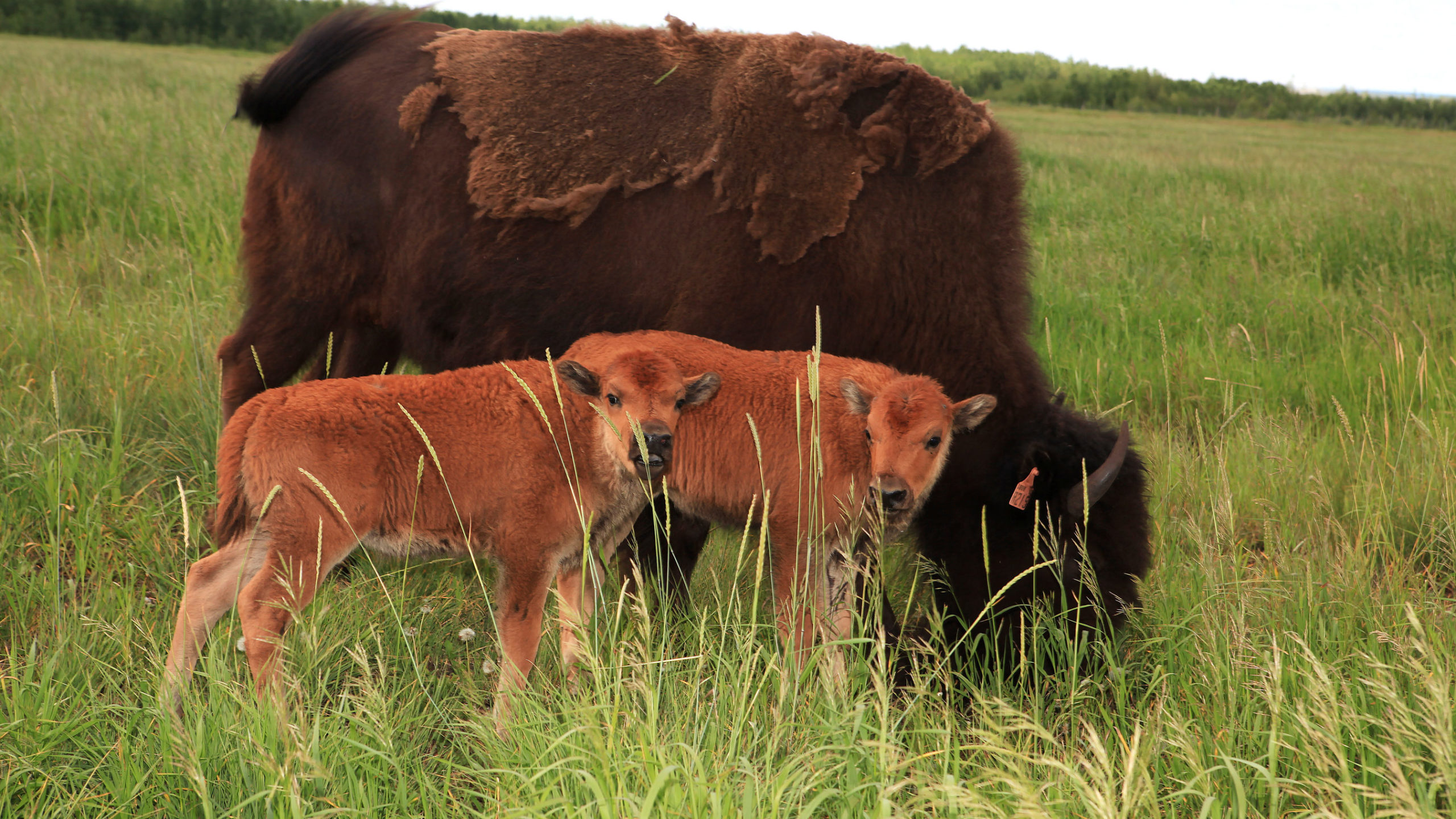For hundreds of years, wood bison, the heaviest land animal in North America, populated the boreal forests of Canada’s northwestern provinces and territories.
By the early 1900s, the massive mammals were on the verge of extinction due to hunting and loss of habitat. But wood bison are making a comeback in their former stomping ground, including on land that once was home to an oil sands mining operation.
For more than a quarter century, wood bison have been home on the range on reclaimed land at the Syncrude oil sands project in a unique and innovative partnership with the Fort McKay First Nation.
It was February 1993 when 30 head of wood bison arrived at Mildred Lake and began to roam 450 hectares of reclaimed grassland at the Beaver Creek Wood Bison Ranch, which is operated by Fort McKay Strategic Services, a subsidiary of the band-owned Fort McKay Group of Companies.
The initial wood bison were relocated from Elk Island National Park and today number about 300.
Greg Fuhr, Syncrude’s vice-president, production, mining and extraction, says the wood bison remain very important for Syncrude and its employees, demonstrating the company’s commitment to returning the land it disturbs to a part of the boreal landscape, capable of sustaining the largest land mammals in North America. And they also represent the company’s commitment to working with Indigenous communities in the region.
“We wanted to demonstrate that our reclaimed land was highly productive and returned back to as good or better than when we started. And the way of doing that we thought was to introduce some sort of large animals in there,” Fuhr says.
“To be honest, the original discussions were around cattle but in consultations and discussions with our neighbours, Fort McKay First Nation, we came to the collective view why wouldn’t we re-introduce wood bison into the region?”
The land was part of the natural range and it just made sense to undertake that initiative, Fuhr says.
Each year, the herd has about 80 to 100 births. Some of the bison are also sent to auction, largely for breeding purposes to other producers. Over time, the herd has remained at about 300 head each year.
Fuhr said the herd is known for its genetic purity.
“As reclamation continues to evolve and mature so does the herd with that. It’s really a visible demonstration and sign of our commitment on reclamation,” he says.
“We’re always very proud of the opportunity to be able to talk about our wood bison because it’s one of those things that people don’t often associate with an oil sands producer.”
